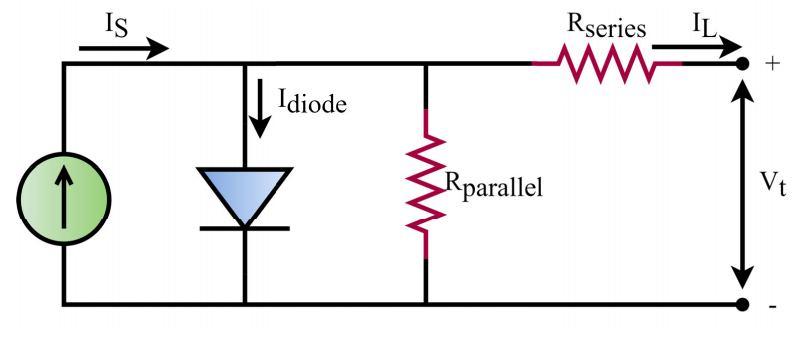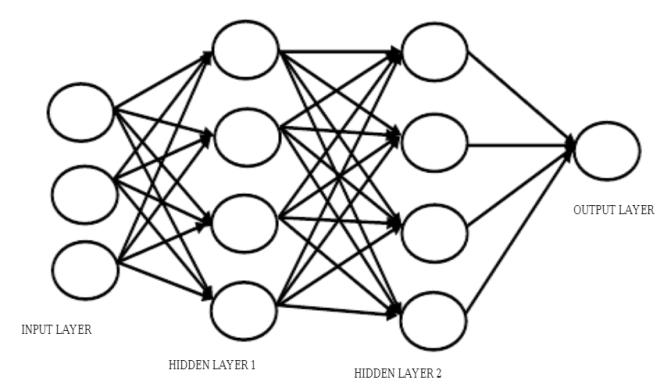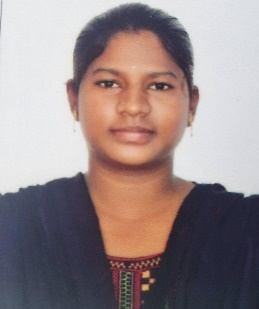https://doi.org/10.22214/ijraset.2023.49445

ISSN: 2321-9653; IC Value: 45.98; SJ Impact Factor: 7.538
Volume 11 Issue III Mar 2023- Available at www.ijraset.com

https://doi.org/10.22214/ijraset.2023.49445

ISSN: 2321-9653; IC Value: 45.98; SJ Impact Factor: 7.538
Volume 11 Issue III Mar 2023- Available at www.ijraset.com
Mahankali Vaishnavi1 , Mr. Y. Rambabu2
1PG scholar in the Dept. of Electrical & Electronics Engineering, in Holy Mary Institute of Technology & Science, Bogaram (V), Medchal District, Hyderabad, India.
2Assistant Professor in the Dept. of Electrical & Electronics Engineering, in Holy Mary Institute of Technology & Science, Bogaram (V), Medchal District, Hyderabad, India.

Abstract: The project aims to improve the PV-WE system's energy usage and the battery energy storage system (BESS). Literature research focuses exclusively on PV, BESS. Surveillance, tension management, frequency control, energy distribution, power quality and artificial intelligence techniques (AI). The aim must therefore be to increase the power quality of the gridconnected PV-BESS system. In order to increase energy quality, technology is continually explored and evaluated. The PVBESS system is built for the microgrid, which offers benefits including continuous supply, efficient load content and effective electricity utilisation. The flow of energy from source to source is controlled by ANN. The development of the MPPT algorithm for validation of the proposed approach is using an artificial network (ANN) technological technique. Both treatments have the greatest technology to compare the results. An extensive research and data finding demonstrates that FLC-based MPCP output is better than the ANN-based MPPT output. The precise and cost efficient use of power is therefore achieved by ANN. This study therefore proposes a new way for assessing the performance at a specific site of the microgrid. The power translation systems are therefore handled in an active and reactive manner taking into consideration their circumstances and limitations.
Keywords: Microgrid, PV-WE, battery energy storage system (BESS), MPPT algorithm, artificial network (ANN)
This The power balancing and load sharing are hierarchical control systems for voltage/frequency control, such as primary monitoring, secondary control and tertiary control[1], that are employed as a microgrid control. The decentralised drop-based control system also gives without communication an essential alternate control[2]. However, the following shortcomings are shown in various control systems:
Generally, models were developed in the d-q synchronous frame of reference. However, this strategy presents some inconveniences. First of all, this technique takes the form of properly balanced three phase systems for loads, grids and models. However, a load normally involves several single phase loads spanning three phases, and so a perfect load balancing, especially in a microgrid, can not be achieved. A load does not necessarily represent a linear load and can be distorted or harmonic very easily. Models are therefore employed in this research in abc co-ordinates.
In practise it needs to be monitored, and PLLs have been employed for this. This is a realistic technique. PLLs have their reactivity and characteristics, and both simulation models and control techniques have these characteristics. For the monitoring of the several models, the angles d-q to a-b-c and a-b-c to d-q are needed (e.g. the 3-phase inverter model).
A control approach that selectively limits the output of the control, taking into account also model line impedances, to achieve the control target.
In tandem with the RESs, the converters are utilised for transforming power into the grid. In the reference study[12], RES is connected to a bidirectional transformer and a hybrid configuration layout that includes PV and WE. Different characteristics like average wind speed, radiation, and temperature need to be taken into account when calculating PV and WE systems as weathersensitive RESs.
ISSN: 2321-9653; IC Value: 45.98; SJ Impact Factor: 7.538

Volume 11 Issue III Mar 2023- Available at www.ijraset.com
In several nations like India, China, Iceland, Sweden and the USA, there are a wide range of RES scenarios[2]. To be added in WE, on-shore and offshore output capacity is different[13]. Accordingly, flexible mathematical modelling and optimization methodologies must be designed to design seasonable WE and PV systems according to the many aspects affecting PV and WE systems. It is difficult to design the non-linear features of pv. Various optimization methods like as the optimisation of particulate swarm are therefore employed for estimating PV system parameters and improving the power production of PV and WE [14]. Ultimately, these strategies will aid configure the modelling of RESs. However, due to voltage drops on the line[4], the distributed generation (GD) units observed incorrect reactive power sharing. In order to overcome these restrictions[1],[3],[5]-[11] A secondary central control that requires dual-way communication between the central control and each DG unit. However, there are no constraints on zero error voltage and frequency rules on the secondary control system[12]. Moreover, although for the correct analysis of practical microgrid systems of low voltage, the line impedances should be considered for the system model, the provided research neglects the effect of these parameters[13],[14]. Motivated by the above restrictions, these papers introduce a new technique of supervising the power control of the grid-off microgrid at a given location, i.e. PCC Microgird's grid-off. The approach used recognises that, given the availability of power sources and their contribution to load consumption, each DG unit has somewhat differing instantaneous active/reactive power output. Consequently, the key control targets will be attained with varied levels of active and reactive power accessibility. In addition to ensuring that every DG unit operates within a steady region of operation, operational limits are in place.
The key topic of this study is as follows in the simulation environment:
1) PV-BESS system power augmentation.
2) Removal of grid voltages and currents of THD.

3) Good voltage control under different load circumstances.

4) To have enough power to meet the demand for load in the worst circumstance in which RES cannot be generated by electricity.
5) Use EVs as a surplus power supply and as an electricity supplier while requiring large grid loads. In varied weather situations, the MPPT algorithm greatly contributes to the highest power generation. For PV and BESS systems in the MATLAB environment, the PI and ANN controllers are created. Finally, both controllers compare the simulation results with the best.
The effort focuses on improving the power and grid stability of BESS and non-linear loads for RESs. There will be a discussion of solar PV and BESS mathematical modelling systems in this section. This section also contains the MPPT algorithms and design procedures.
In order to extract maximum power out of a PV panel[40]–[44], several of the researchers investigated MPPT models and algorithms in the literature. Figure 2 illustrates the circuit programme of an easy PV system. The authors have defined in detail in [46] the mathematical equation of the panel's I-V characteristics. The panel's current output is IL, the diode current is Idiode, the PV panel current is IS, the heat voltage is VT, c is diode constant and the Rseries and Rparallel are shown in series and in parallel branches, and isate is reverse saturation.
ISSN: 2321-9653; IC Value: 45.98; SJ Impact Factor: 7.538

Volume 11 Issue III Mar 2023- Available at www.ijraset.com
The MPPT algorithm panel block scheme is shown in Fig. 3. The bad impacts of the normal MPPT algorithm are removed by means of the MPPT algorithm based on ANN [4,7], including poor unit shading performance and the local maximum power point for partial radiation selection. ANN is the most used MPPT algorithm technology in the recent epoch. This study therefore develops ANN-based MPPT.

Precision dynamic battery modelling is necessary so that numerous challenges confronting the old models can be overcome. The ampere-hour counting approach fits well for calculating the status of the charge, as described in Reference 21. The time to load or download and the current expression can be set as follows this model:
Where SoC0 = the battery's original SOC point, Ibattery = the current of the battery, and Cbattery = battery capacity. The batteries can be charged and discharged via SoC equation as indicated in Equation (17).
Where μ = rate of self-deloading; ̈battery = efficiency of battery charging or discharge. The capacity of the battery depends on the temperature and is:
Where the battery = capacity of the battery is when the battery temperature is Tbattery and C0 = nominal capacity of the battery.
In particular in unbalanced or distorted cases, PLL's PLL Single Order General Integrator (SOGI) is meant to deliver enhanced performance of PLL. G. Power factor compensation G. (PFC) The three-phase reactive power compensator is a model of the deltaconnected condensers[23]. This block has an actual input and the voltage is created on the condenser terminals. It can be used for blocks generating a true output (voltage-controlled current sources). The three-phase reactive power compensator control determines the required setting based on the measured capacity of the reactive power compensator block. Near the unit the power factor should be changed.
ISSN: 2321-9653; IC Value: 45.98; SJ Impact Factor: 7.538

Volume 11 Issue III Mar 2023- Available at www.ijraset.com
This section contains a new monitoring system for the quality control of power not requiring the installation of additional compensatory devices and adaptable to various configuration microgrids. The controller manages the voltage/frequency of each DG power conversion system by means of modifications to the operating limits for active/reactive power. Due to availability of the source of energy and the changes in demand, each DG is able to accomplish a variation in a realistic micro-grid instantaneous power output. Consequently, the active/reactive power generating system likewise has varying availabilities.

Artificial neural networks (ANN) are generally described as the interconnected "neurons" system for the exchange of signals. These links are numerical, input-adaptable, and learningable, based on experience. ANN is one of the areas of AI technology. This concept provides an alternative approach to the power system application. The network has neurons, neurons and 2 hidden layers, which flow from the network through the output layer. As an input-output model, the network is basic and its weights are as one parameter. The multi-layer NN architecture is shown in Figure 4.


There are two paths in the training cycle: first is forward spreading and second is error reverse spreading. The first way sends the inputs through the neural network structure to their output (it passes the output error to the input in order to estimate the individual contribution of each weight in then network to the final output error).
To reduce the output error, the weights are adjusted. The Marquardt Levenberg training algorithm is used to train neural network monitoring and is effective, It is effective and efficient easy to build and takes no time[14]–[18]. The layer comprises of 1 layer of input, 2 layer and 20 neurons and one layer of output through network training. The input layer has a tan-sigmoid feature and PosLinear is activated with the output layer. The neural network is constructed by applying the BP algorithm for the set neurons of each layer. 323 iterations and errors are made during every training session.

ISSN: 2321-9653; IC Value: 45.98; SJ Impact Factor: 7.538
Volume 11 Issue III Mar 2023- Available at www.ijraset.com

ISSN: 2321-9653; IC Value: 45.98; SJ Impact Factor: 7.538
Volume 11 Issue III Mar 2023- Available at www.ijraset.com
X.
A technique for the improvement of power of PV-BESS with ANN controls has been proposed by the authors. The MPPT algorithms based on ANN are designed for the extraction of maximum power by PV and BESS. The shunt active filter is accomplished in non-linear terms with the use of ordinary PI controllers and artificial intelligence networks. The proposed ANN control technique achieved the improvement of harmonic supplys currents and reactive energy consumption via non-linear load. The enhanced efficiency of the calculation approach to artificial intelligence shows that a range of challenges of power quality can be used. The results of these tests improve the artificial neural network's backbone propagation. The THD is created by the specified technology for load and source voltages and streams. which complies with THD's threshold limits according to the IEEE-519 standard (1992). Finally, the ANN technology's performance has overtaken the controlling method based on the PI system.

ISSN: 2321-9653; IC Value: 45.98; SJ Impact Factor: 7.538
Volume 11 Issue III Mar 2023- Available at www.ijraset.com
[1] R. M. Elavarasan, ‘‘The motivation for renewable energy and its comparison with other energy sources: A review,’’ Eur. J. Sustain. Develop. Res., vol. 3, no. 1, p. em0076, Feb. 2019.
[2] R. M. Elavarasan, ‘‘Comprehensive review on India’s growth in renewable energy technologies in comparison with other prominent renewable energy based countries,’’ J. Sol. Energy Eng., vol. 142, no. 3, pp. 1–11, 2020.
[3] R. Madurai Elavarasan, S. Afridhis, R. R. Vijayaraghavan, U. Subramaniam, and M. Nurunnabi, ‘‘SWOT analysis: A framework for comprehensive evaluation of drivers and barriers for renewable energy development in significant countries,’’ Energy Rep., vol. 6, pp. 1838–1864, Nov. 2020.
[4] R. Madurai Elavarasan, L. Selvamanohar, K. Raju, R. R. Vijayaraghavan, R. Subburaj, M. Nurunnabi, I. A. Khan, S. Afridhis, A. Hariharan, R. Pugazhendhi, U. Subramaniam, and N. Das, ‘‘A holistic review of the present and future drivers of the renewable energy mix in Maharashtra, state of India,’’ Sustainability, vol. 12, no. 16, p. 6596, Aug. 2020.
[5] G. M. Shafiullah, M. T. Arif, and A. M. T. Oo, ‘‘Mitigation strategies to minimize potential technical challenges of renewable energy integration,’’ Sustain. Energy Technol. Assessments, vol. 25, pp. 24–42, Feb. 2018.
[6] L. Ashok Kumar and V. Indragandhi, ‘‘Power quality improvement of gridconnected wind energy system using facts devices,’’ Int. J. Ambient Energy, vol. 41, no. 6, pp. 631–640, May 2020.
[7] S. A. Mohamed, ‘‘Enhancement of power quality for load compensation using three different FACTS devices based on optimized technique,’’ Int. Trans. Electr. Energy Syst., vol. 30, no. 3, p. e12196, Mar. 2020.
[8] S. Paramanik, K. Sarker, D. Chatterjee, and S. K. Goswami, ‘‘Smart grid power quality improvement using modified UPQC,’’ in Proc. Devices for Integr. Circuit (DevIC), Mar. 2019, pp. 356–360.
[9] J. Schiffer, T. Seel, J. Raisch, and T. Sezi, “Voltage stability and reactive power sharing in inverter-based microgrids with consensusbased distributed voltage control,” IEEE Transactions on Control Systems Technology, vol. 24, no. 1, pp. 96–109, 2016.
[10] Q. Shafiee, J. M. Guerrero, and J. C. Vasquez, “Distributed secondary control for islanded microgridsła novel approach,” IEEE Transactions on Power Electronics, vol. 29, no. 2, pp. 1018–1031, 2014.
[11] L.-Y. Lu and C.-C. Chu, “Consensus-based droop control synthesis for multiple dics in isolated micro-grids,” IEEE Transactions on Power Systems, vol. 30, no. 5, pp. 2243–2256, 2015.
[12] J. W. Simpson-Porco, F. D¨orfler, and F. Bullo, “Synchronization and power sharing for droop-controlled inverters in islanded microgrids,” Automatica, vol. 49, no. 9, pp. 2603–2611, 2013.
[13] X. Wu, C. Shen, and R. Iravani, “Feasible range and optimal value of the virtual impedance for droop-based control of microgrids,” IEEE Transactions on Smart Grid, 2016, early access article.
[14] Y. W. Li and C.-N. Kao, “An accurate power control strategy for powerelectronics-interfaced distributed generation units operating in a lowvoltagemultibus microgrid,” IEEE Transactions on Power Electronics, vol. 24, no. 12, pp. 2977–2988, 2009.
[15] Maniktala, Sanjaya: Switching Power Suppliers A-Z, 2nd Ed., Newnes Press, 2012
[16] R. W. Erikson, D. Maksimovic: Fundermentals of Power Electronics, 2nd Ed., Kluwer Academic, 2001.
[17] H. S. Ko, T. Niimura, J. Jatskevich, H. C. Kim, and K. Y. Lee, “Power quality control of hybrid wind power generation with battery storage using fuzzy-LQR controller,” in IEEE Power Engineering Society Meeting, Denver, Colorado, pp. 1722–1728, Jun. 2004.
[18] G. Perez, I. Gandiaga, M. Garmendia, J. F. Reynaud and U. Viscarret, “Modelling of Li-ion batteries dynamics using impedance spectroscopy and oluse fitting: EVs application,” International Battery, Hybrid and Fuel Cell Electric Vehicle Symposium, pp. 1–9, 2013.
[19] N. Femia, G. Petrone, G. Spagnuolo, M. Vitelli: Power Electronics and Control Techniques for Maximum Energy Harvesting in Photovoltaic Systems, CRC Press, 2013
[20] R. Teodorescu, M. Liserre, P. Rodriguez: Grid Converters for Photovoltaic and Wind Power Systems, Wiley-IEEE Press, 2011.

ISSN: 2321-9653; IC Value: 45.98; SJ Impact Factor: 7.538
Volume 11 Issue III Mar 2023- Available at www.ijraset.com
Mahankali Vaishnavi received Diploma in Electrical and Electronics Engineering in 2018 from Samskruthi College of Engineering and Technology Ghatkesar(v),Telangana and received Bachelor of Technology in Electrical and Electronics Engineering in 2021 from Holymary institute of technology and sciences Bogaram (v),Telangana and Pursuing Master of technology in electrical power systems in Electrical and Electronics Engineering at Holymary institute of technology and sciences Bogaram (v)Telangana.

Mr.Y.Rambabu received B.Tech. Degree in Electrical&Electronics Engineering from CVSR College of Engg , J.N.T.U. Hyd in 2007 & M.Tech Degree in Power Electronics from Aurora College of Engg JNTUH in the year 2012. He had teaching experience of 10 years &Industrial experience 02years. Currently working as Asst. Professor in HolyMary Institute of Technology & Science, Bogaram,R.R. Dist, Hyderabad, Telangana, India in the Dept. of Electrical & Electronics Engg. He published 18 research papers in reputated International Journals and 12 paper in International and National conferences. His Interest areas are Neural Networks, Power electronics & Drives, FACTS. He is a member in International Association of Engineers (IAENG).

